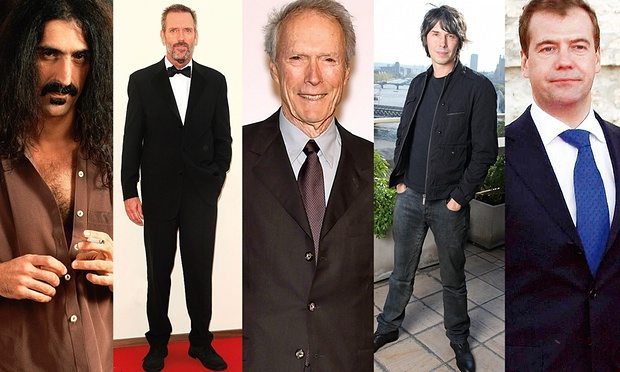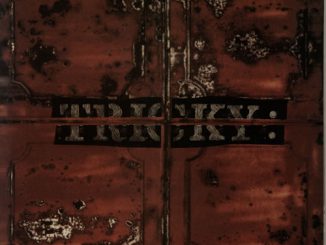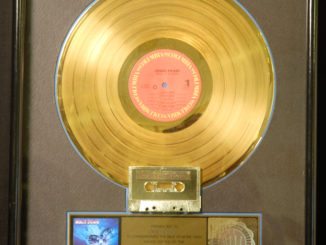Jonathan Margolis is listening to a £3,159 portable sound system. His wife says that high-end hi-fi is like anti-wrinkle cream: it’s expensive with dubious results. But, compared to some, his set-up is modest. He meets the people for whom hearing is believing

I am listening to music at my desk. The portable player I am using is an Astell & Kern AK240 from South Korea which costs £2,200. The headphones are theFinal Audio Design FI- BA-SS model from Japan which cost £800. The tips are custom-moulded by an Exmoor company, Snugs, and are £159.
The actual music is a high-definition download that came as a demo on the Astell & Kern player, but is of a type that would cost around £24 for an album. The tracks are in the highest available quality, known as 192kHz/24bit, which many scientists say is beyond the requirements of the human ear, but people – OK, people like me – still pay good money for them.
How does this glorified £3,000 Walkman-type setup sound? I barely have the words. It is just … wonderful. It’s so clear, so bold, so vivid, so emotionally and physically consuming that I am almost unconcerned what music I’m listening to because I am enjoying the sound quality so much. OK. It’s, er, the Corrs. Their 2000 album, In Blue. I have quite ropey taste in music, but even I don’t like the Corrs much. Yet since I found this recording on the Astell & Kern, I keep playing it.
Yes, I am Jonathan and I am an audiophile. I’m not a bad audiophile. I’m in control. So I’m a little contemptuous of the type of hardcore audiophile that buys, say, speaker cables, for tens of thousands of pounds – and insists they can hear the difference. But I also feel contempt – no, pity – for people I see listening to music on cheap equipment, particularly expensive, celebrity-endorsed headphones I know come out of the Chinese factory for a fiver. They would probably find it a shame and feel pity that I’ve just listened to In Blue 10 times on the trot.

Surprising as it might seem to a generation weaned on iPods and Spotify, proper hi-fi is a booming industry. It might now take the form of a digital streamer, preamp, power amp and speakers, but it inspires devotion as fervent as any early-90s High Fidelity, American Psycho-style enthusiast.
It’s still mostly men that get into quality hi-fi. There is almost no limit to what they can spend. This is as cash-consuming an obsession as fine watches or wines. There’s a Massachusetts company, Nordost, that makes speaker cables at up to £18,000 a pair. Dealers in the UK sell them, one, I see, in Crewe.
Yet hi-fi is not always a rich person’s hobby. The wealthy tend to go for multi-room, concealed ceiling speaker, welcome to my bunker Mr Bond installations, which I find loathsome. I hate, with a vengeance, background music. Hi-fi nuts more typically will live in dungeons and economise on bathing to fund insanely expensive equipment. A relative was telling me about a mutual friend who, he says, has got “massively” into hi-fi and spent £3,000 on a system. I explained there are people who will spend that on a single connector lead.
Even in its 80s infancy, hi-fi’s upswing began at both ends of the market. Richer Sounds was democratising audio, and in the era before portable sound got good (the Sony Walkman appeared in 1979) every man wanted to graduate from a record player to a decent separates system – record deck, cassette deck, amplifier, speakers.

And although I have been immersed in this world for 25 years, I still don’t quite know who buys the stuff. Hi-fi stores are often in modest, ordinary towns and suburbs. Who is it in Crewe that is spending the price of a very nice new car on speaker wires?
Some of the enthusiasts, of course, are the rich and famous. Douglas Adams had a system in his Islington home that reputedly cost £25,000. The crime writer Ian Rankin is an aficionado, having been a hi-fi reviewer in the 1980s. Celebrity physicist Brian Cox reportedly loves “high end” hi-fi. And the internet says Frank Zappa was big on it, along with Clint Eastwood and Hugh Laurie – and that Russian prime minister Dmitry Medvedev has a system by Naim, a Salisbury manufacturer.
In a proper hi-fi dealer, Richer Sounds included, you can buy a good system of parts from various manufacturers for as little as £1,000. The bits won’t match, though – heaven forbid they should look nice. None of it will have what hi-fi men call WAF – Wife Acceptance Factor.
Yep this is a thing. Non-ironic. I believe.
Women broadly have too much sense to be audiophiles. There have been a couple of attempts to open high-end hi-fi stores aimed at attracting women. There’s one on Wigmore Street in London, with scatter cushions dotted around the showroom. They say they have high-spending female enthusiasts, but I’m sceptical. I know just one.

British hi-fi has certainly been a commercial success. Brands like Naim, Meridian, Linn, Bowers & Wilkins, Arcam, KEF, and many others export globally. Others, including Quad, Wharfedale and a whole bunch of others have been bought by a Chinese company, IAG, and manufacture on a park-like campus in Shenzhen, but still do research and development in Huntingdon.
The real question is: is it worth it? Does sound quality rise proportionately with price? To an extent, yes. For £1,000, or less if it’s secondhand, you can buy some good kit; £5,000 to £10,000 can buy something really special. But enthusiasts talk about a law of diminishing returns, whereby thousands of pounds extra will buy an improvement that is almost undetectable, and probably only audible to the bloke who paid the money. This is why my wife believes hi-fi is the male version of wrinkle cream – dubious claims, expensive prices, results only apparent to the buyer.
A while ago, I asked a renowned London distributor, Absolute Sound, to put together the ultimate hi-fi system. They set up the following: Métronome Technologie CD deck from France, £70,000; Continuum turntable from Australia, £80,000, with Koetsu cartridge and stylus from Japan, £2,400; darTZeel preamplifier and power amplifier from Switzerland, £28,850; Magico speakers from Berkeley, California, £58,000 (the £200,000 Wilson speakers from Utah hadn’t arrived in time for the audition); interconnect and speaker cables from Transparent of Maine, power cables from Crystal Cable in Holland, total £18,000. Grand total £257,250, or £457,250 with the Wilson speakers.
How did that sound? Well, huge, penetrating, encompassing, almost shockingly beautiful. I found my mind wandering off to other things of quality and stature I had experienced – wonderful food, fantastic wine, even, and sorry to be rude, sensational sex. Of all the notes I wrote the most telling was that if I had that kind of money, I’d pay up on the spot, more willingly than for a nice car or a country cottage.

But then, a couple of years later, I heard something perhaps even better. Or maybe just different. This was a £200,000 system rigged up by Linn at its factory outside Glasgow. The music source here was vinyl, but not any vinyl. Linn has pioneered being a record label as well as a hi-fi brand, so it can, as managing director Gilad Tiefenbrun puts it, “own the entire sound path, from artist to loudspeakers”. I can still feel the thrill of hearing something that, paradoxically, was likely better than the real thing.
But how much of this is science, how much, frankly, technological piffle? I asked one of the most respected hi-fi enthusiasts in the country, Malcolm Hawksford, emeritus professor of electronic systems engineering at Essex University, and author of more than 250 papers on music reproduction.
“There is witchcraft in hi-fi, yes,” he said. “People often try experimental designs and get spectacular results, but there are no equations, so it’s pseudo science. They don’t really know how they’ve done it. But I doubt that Stradivarius wrote down equations or solved the wave structure in the materials he used. He would have made violins by experiment and finding techniques that work.”
Hawksford’s own hi-fi is mostly made by a tiny company, LFD Audio in Clacton-on-Sea, with speakers by Audio Physic, a German maker, and other parts – some 20 years old – by Linn and Marantz. He doesn’t believe in portable audio at all. Ian Rankin does, though, and travels everywhere with music from his iPad and some Sennheiser ear buds. “They work as earplugs, too,” he says.
Rankin is still an audio buff, and moderately tolerant of the more eccentric hi-fi blokes. “When I worked on Hi-Fi Review, we had readers and reviewers who said if you had books in the room where your hi-fi was, you should fold down the corner of each and every page. There is clearly a placebo effect here. But if you believe it, you’ll probably hear better sound because you’re focusing more, concentrating better.

“When I was a reviewer, and now that I buy high-end hi-fi, I doubt I could hear the difference between a £50 connecting cable and a £5,000 one, but there will be people out there who say they can. They’re like wine or whisky tasters. I could never do that. But I do think that if you enjoy good sound quality, it’s worth spending. Last year when I was having my midlife crisis, my accountant, who’s a huge hi-fi fan, took me to a dealer in Fife and I spent £25,000 on a new system for the living room.” Rankin’s speakers are Audio Physic, like Hawksford’s, pre-amps by Trigon in Germany, power amps by Auralic, which is Chinese, CD deck by Hanss Acoustics, also from China. There’s also vintage Linn and Arcam kit in his repertoire.
So for the non-bestselling-author reader with less to spend, what have I heard that’s good? On a budget, I’d recommend anything by Essex-based Q Acousticsand QED cables, for whom Hawksford consults. Q’s £349, bookshelf-sized BT3 Bluetooth wireless speakers with built-in 50w power amplifiers on board are properly good.
For something more rarefied, but still sensible and that equally doesn’t involve wires trailing all over your room, try Focus 600HD, £8,000 wireless speakers with built-in amplifiers from a Danish maker, DynAudio. That is, admittedly, 16 times the value of my 2002 Saab, but I do at least know people who could afford it.
And for a more left field mixed-maker system, I’d pair a £3,000 Linn one-box music streamer and amps, the Magik DSM, with the extraordinary £1,200 SCM-11 speakers made in an ex-RAF hut near Stroud by ATC, which supplies mostly professional clients, from Mark Knopfler’s British Grove Studios to the LA Philharmonic’s Walt Disney Concert Hall.
And finally: never be put off by hi-fi nuts who sneer at beautiful hi-fi by Bang & Olufsen. Design-focused and high street it may be, but it still sounds great. As well as having lashings of WAF.




“Perfect pitch: Wilson speakers, £200,000.” Is that as in David & Victoria Beckham’s price range? :p